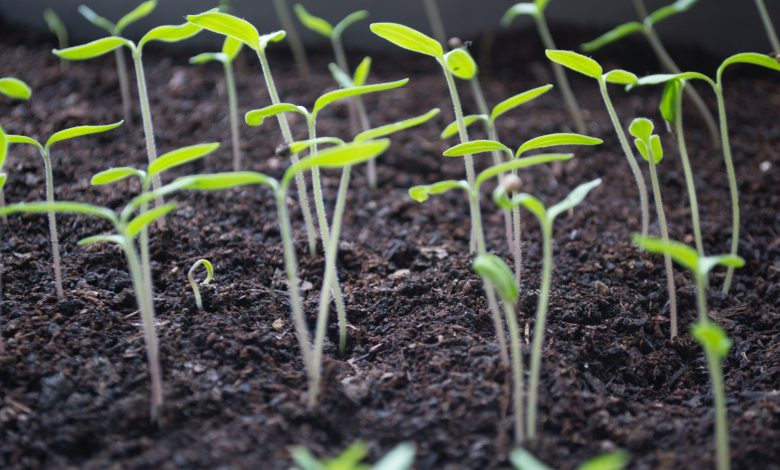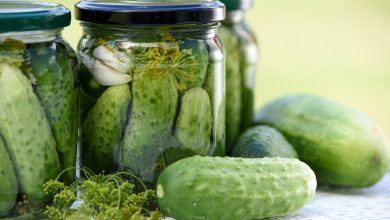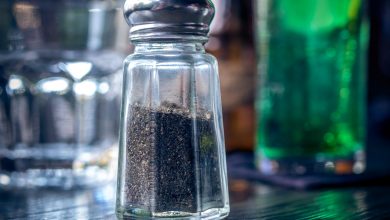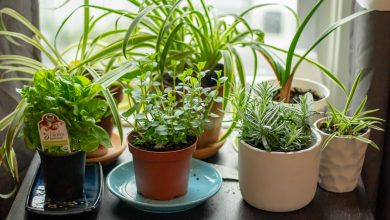Grow Edible Sprouts in Your Kitchen

Sprouts are a valuable addition to any diet because they offer an endless abundance of health benefits. These wispy, tender little greens are not only delicious and nutritious, but are also surprisingly easy and cheap to grow right in the comfort of your own kitchen. Minimal tools, space, and effort are required to successfully cultivate these healthy, edible little plants.
What Are the Benefits of Eating Raw Sprouts?
Let’s start with addressing why adding these live greens to your diet will benefit your overall health. While the list of health benefits and nutritional contents of sprouts are seemingly never ending, here are some of the main advantages:
- Live enzymes
- Sprouts contain higher levels of living enzymes than almost any other food. Enzymes are vital proteins that speed up important chemical compounds in the body. Specifically they work with the digestive system to create healthy stomach acid and bile, which helps to break down food more efficiently and aids in nutrient absorption.
- Aids digestion/dietary Fiber
- Sprouts contain high levels of dietary fiber, which aids the digestion process, essentially helping foods to pass easier through the digestive tract, and supports healthy, regular bowel movements
- Strengthens immune system
- Sprouts strengthen the immune system by introducing high levels of easily absorbable antioxidants, chlorophyll, and Vitamin C to the body. This helps to detoxify the body and strengthen the immune system simultaneously.
- Improves vision
- Sprouts contain high levels of Vitamin A, which directly helps improve vision and optimize eye sight. Sprouts also contain antioxidant agents to protect the cells of the eyes from damage caused by free radicals.
- Alkalinizing
- Since sprouts are alkaline in nature, they help balance the body’s pH and reduce acidity. A more alkaline pH is associated with a lower risk of disease and illness.
- High in Vitamin C
- Vitamin C, also known as ascorbic acid, is a water-soluble vitamin that helps to prevent cancers, fight free radicals, and promote healthy cell growth. All of these factors contribute to a healthy functioning immune system.
- High in Omega 3 Fatty Acid
- An increased intake of Omega 3 Fatty Acids has been directly connected with reduced inflammation levels in the body. Inflammation causes cancer, diseases, and auto-immune illnesses, so introducing anti-inflammatory foods rich in Omega 3 into the diet helps eliminate these health risks.
- Contains silica
- This is a nutrient that regenerates the connective tissues of the skin, nerve cells, spinal cord, the brain, and the nervous system. This nutrient also helps the pancreas control insulin levels. Increased levels of silica intake has been linked to healthier nails, skin, and hair.
- High levels of chlorophyll
- Chlorophyll works to keep the blood clean and helps with overall detoxification of the body.
- Contains antioxidants
- Antioxidants are responsible for fighting cell damaging free radicals in the body that cause cancer.

Begin by Finding the Right Seeds to Sprout
Essentially, sprouting just means germinating seeds of common edible legumes, grains, and vegetables. Sprouting signifies the beginning stage of a seed’s growth.
It is important to be sure that you are using seeds specifically designed for sprouting. This is because, in general, a lot of seeds are pre-treated with fungicides and other chemicals which can make them harmful to eat in raw sprout form.
Pay careful attention to packaging to ensure that the seeds you will be using are specifically designed for sprouting and are less than two years old. It is ideal to buy seeds that are manufactured locally and organically. Sprout seeds can be purchased online, at garden centers, health food stores, and in the produce section of select grocery stores.
How to Grow Raw Sprouts at Home
After you’ve chosen the seeds for the type of sprouts that you would like to grow, choose one of the methods below to begin growing your sprouts at home.
Sprouts take between three to seven days from start to finish before they are ready to be eaten. Be sure to follow the instructions carefully to ensure that the sprouts will grow optimally and to prevent contamination. There are some dangers that should be avoided when growing sprouts. So be sure to read the bottom paragraph of this article to ensure that you are growing your sprouts safely to avoid any health risks.
These are some common types of seeds that you can grow as edible sprouts:
- Soy Bean Sprouts
- Broccoli Sprouts
- Clover Sprouts
- Alfalfa Green Sprouts
- Wheat Sprouts
- Mung Bean Sprouts
- Mustard Green Sprouts
- Lentil Sprouts
- Onion Sprouts
- Pea Shoots
Method 1: Growing Sprouts in a Mason Jar
This might be the most common, effective, and easiest way to grow sprouts so that you can be sure that you are harnessing the full health benefits and potential of these tiny plants.
- Rinse about three tablespoons of the grains, seeds, or legumes that you will be sprouting in a colondor for about a minute. Then drain them and place in a large mason jar filled with a few cups of water. The amount of water should be at least double or triple the amount of grains or seeds, as these will absorb quite a bit of water while they are sprouting. Skim off any seeds that float to the top; only seeds that are completely covered in water should be allowed to set. Make sure you are using water that is safe to drink, and ideally distilled. Allow them to soak overnight.
- The next morning, or around 12 hours later, dump the water out. Cover the seeds with water again, swirl, and drain. Once drained, place the seeds back in the mason jar, cover the mouth of the jar with a piece of cheesecloth, and secure it with a rubber band.
- Let the seeds sit for 12 hours before repeating the process of draining, swirling, draining, covering with water, and letting them sit again.
- Repeat this process of rinsing and draining every twelve hours or at least twice a day for three to seven days or until sprouts have grown. This process of draining and refilling the jar with fresh water twice per day is an essential part of avoiding contamination of bacterial growth.
- Once they have grown, drain all water but do not refill. Store the jar of sprouts in the refrigerator. At this point, the sprouts need to be kept as dry as possible to maintain their freshness and to prevent bacterial growth.
- You can sprinkle the sprouts on top of salads, soups, or any dishes of your choosing for an added dose of nutrition to every meal.
Method 2: Grow the Sprouts in a Pan of Soil
The benefit of this method makes it much easier to avoid contamination than the first method because seeds are contained in an environment that is less moist, making it less prone to accumulating harmful bacteria. However, the drawback of this method is that it may yield less sprouts because there is less moisture to help them grow.
- This method involves using an 8×8 baking pan, preferably one that you don’t mind getting ruined because it will be filled with soil.
- Cover the bottom ½ inch of the pan with potting soil.
- Sprinkle an even layer of sprouting seeds on the surface of the soil. A popular combination of seeds to use for this method is a mix of broccoli, radish, mustard green seeds, and alfalfa sprouts. Try to cover the entire surface of the soil in a light, single layer of the seeds.
- Sprinkle three tablespoons of water on the surface of the seeds. Do not over-saturate the seeds. The soil should not be flooded, and the seeds should not be floating in the water – if this is the case, then you have added too much water.
- For the first 48 hours, cover the pan of seeds with a dish towel and store in a cool dry place. There is no need to remove the cover or to add more water during this time.
- After the 48 hour mark, take the pan of seeds out and place them on a counter-top where they can receive either direct or indirect sunlight. Give them three tablespoons of water.
- For the next seven days, leave the pan of seeds in the same location with either direct or indirect sunlight. Give them three tablespoons of water per day, keeping the soil just moist enough to keep the seeds moist.
- After the seven days, the sprouts should have grown to be at least an inch or two in height. Use scissors to cut them at the base of the soil. Cut them on an as-needed basis, as they are best eaten fresh.
- Use in smoothies, sprinkle on top of salads, or garnish any dishes with the sprouts to add extra nutrition to every meal.

Things to Note
Live sprouts run the risk of becoming contaminated with bacteria since they are grown in a high moisture environment. Some bacteria, including e-coli, are dangerous and can cause illness in humans and pets.
To reduce the risk of contaminating your sprouts, be sure to only handle the sprouts in a clean environment and with clean hands. Avoid touching the seeds while they are sprouting, as well as the moist inner areas of the jar or environment where the seeds are sprouting. This prevents the introduction of bacteria to the moist environment, which could potentially multiply and spoil your sprouts. It is also important to consume the sprouts within three or four days after they are ready to be eaten, and then repeat the growing process for a fresh batch.



